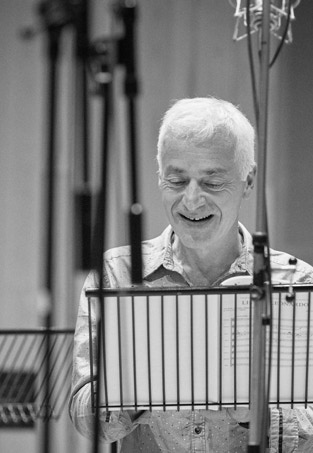The Last Supper
WITH
Tomás Luis de Victoria – Unus ex discipulis meis (1585)
Edmund Rubbra – Amicus meus (1962)
THE IMAGE
In the ‘upper room’ of St. Mark’s gospel, the various disciples react with astonishment, disbelief, anger, horror, fear, anxiety and guilt at Jesus’s calm proclamation of two of the most momentous events in the Christian story: his forthcoming betrayal and the Institution of the Eucharist (the naming of the bread as his body and the wine as his blood, as narrated by St. Luke). We know from his drawings that Leonardo had considered other moments in the narrative. One sketch shows Judas rising from his traditional seat on the near side of the table to dip his bread into the same bowl as Christ, as a signal of who was to betray him. In the finished mural, the left hand of Judas hovers over a roll of bread, echoing Christ’s right hand.
This is just one of several allusions to other moments in the story of Christ and the disciples. The characteristically belligerent St. Peter holds the knife with which he is to cut off the ear of a soldier at Christ’s arrest, after Judas has kissed his master to identify him. The knife points to St. Bartholomew at the end of the table who is to be martyred by flaying. St.Thomas raises the finger with which he intends to verify the wound in Christ’s side after the Resurrection, also signalling the heavenly realm above.
Each disciple reacts individually according to what Leonardo called ‘il concetto dell’anima’ (the intention of the soul). He had researched the way that the brain and its neurological plumbing took in sensory information (such as Christ’s terrible pronouncement) and transmitted impulses of motion and emotion to the face, body and limbs.
As always with Leonardo his science works in partnership with his creative fantasia in service of meaning.
MARTIN KEMP
———————————————————————————————————————
THE MUSIC
The Last Supper is referred to in the Holy Week services of Tenebrae (shadows), sung in increasing darkness as candles are extinguished in the early hours of the morning. Victoria’s deceptively simple four-voice settings of the complete music are rarely heard at the lower pitch implied by the clef grouping here. In this setting the exact moment that Christ announces his betrayal is caught in the music while Rubbra’s brooding setting (the whole set recorded by The Sixteen on COR16144) imagines the private thoughts of Christ: ‘My friend betrayed me with a kiss’.
ROBERT HOLLINGWORTH
TEXT / TRANSLATION
VICTORIA
Unus ex discipulis meis tradit me hodie.
Vae illi per quem tradar ego.
Melius illi erat si natus non fuisset.
Qui intingit mecum manum in paropside,
hic me traditurus est in manu peccatorum.
One of my disciples is betraying me today.
Woe to him by whom I am betrayed.
Better for him if he had not been born.
The one that dips his hand with me in the dish,
he will give me up into the hands of sinners.
RUBBRA
Amicus meus osculi me tradidit signo:
quem osculatus fuero, ipse est, tenete eum:
hoc malum fecit signum,
qui per osculum adimplevit homicidium.
Infelix praetermisit pretium sanguinis,
et in fine laqueo se suspendit.
My friend betrayed me with the signal of a kiss:
the one whom I kiss, that is he: hold him fast.
That was the wicked token that he gave,
he who by a kiss accomplished murder.
Wretch, he gave up the blood money
and in the end hanged himself.

Charles Gibbs
Bass
Credit Matthew Brodie
I FAGIOLINI
Clare Wilkinson - mezzo-soprano
Nicholas Mulroy - tenor
Greg Skidmore - baritone
Charles Gibbs - bass
Rubbra - Full choir